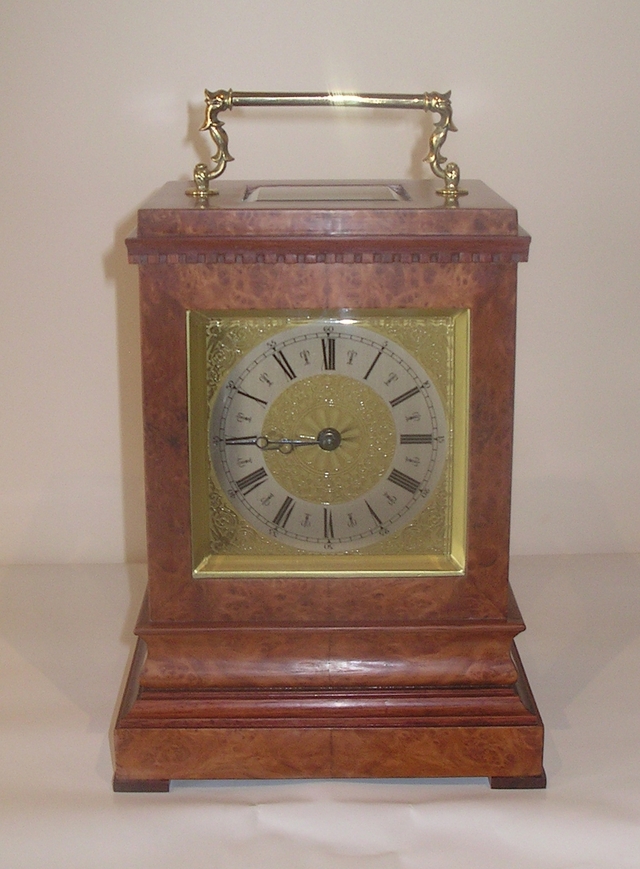Share your craft projects
Make new craft buddies
Ask craft questions
Blog your craft journey
Madburg
426 posts
and
20 followers
in about 3 years
in about 3 years
More from Madburg
Mantel clock 7
Are you keeping up with all my clocks??
While this is another Mantel clock, it is often called a Carriage clock. However, we usually think of carriage clocks as a small solid brass clock. The term stems from their originally purpose which was as a small portable time piece which, carried in their own outer leather case, could be taken on travels in a horse and carriage. They had there origins in France in the early 1820's, where by the middle of the 19th century, bass carriage clocks were mass-produced in huge numbers across all France.

However, in England the cases were made of wood and in limited numbers only for the more affluent members of society. They were made by London chronometer makers, and as such were expensive and of a superb quality, superior to any other clock then available in England. They used the balance wheel mechanism instead of a pendulum escapement as these were not affected by movement.
We usually think of carriage clocks as having a brass or gilt case, with glazed panels to every side. However in England a wooden cased version appeared. My clock is typical of the style made in the London area between 1815 to 1845.

The style is sometimes called a four glass bracket clock. It has bevelled glass in each side, and a piece of thick bevelled glass on top so you can see the balance wheel. It also has a glass back door - strangely the dial glass isn't included in the count! Getting such small pieces of bevelled glass is problematic as I have only discovered on guy who does hand bevelling on glass in Western Australia. It is made from Jarrah, with book matched Vavona veneer. The dentil moulding around the top is typical of these clocks. The name of these clocks changed again as we moved into the 19th and 20th centuries, now often being called a Library clock.
The replica elaborate period handle could be folded flat so the clock could be put into its case for taking on a journey, though few were actually made with a separate carrying case. I didn't make one either! The dial is also a reproduction of the delicate engraved and gilded ones of the period . It has a gilded 'sight ring' around the dial.
Another typical feature of your clock is that it is wound and adjusted from the rear. This negates the need for a front opening door and holes in the dial.
Most four glass clocks would strike the hours on a coiled gong,. However this houses another Hermle movement which strikes the hours and half hours on two bells - a ting-tang strike. The key is housed inside the back door.
As ever thanks for looking.
3 Comments
A nice simple design with some great details. Thanks for sharing and the history.
Main Street to the Mountains
Very interesting. The handle would come in handy for accessing the back side when winding.
Yes, but there's always the suggestion that you never carry a clock by the handle in case it comes off!!!
















